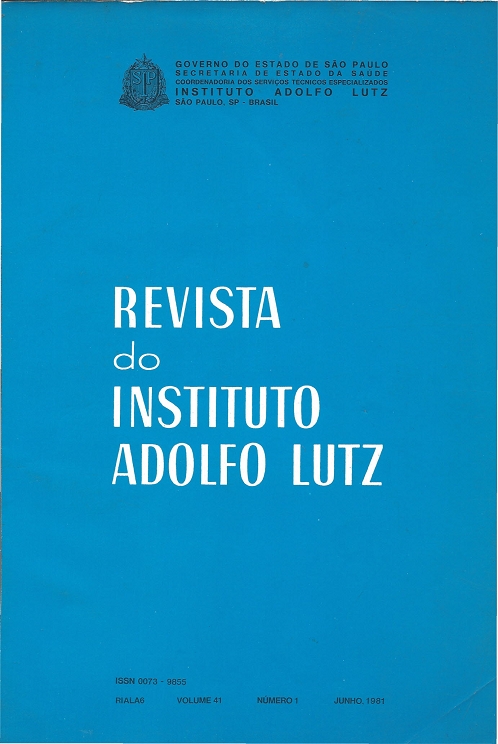Abstract
There are some oil mixtures that, due to their fatty acid cornposition, can be added to olive oils. This addition cannot be detected th rough routine procedures because the chemical and physical values of the final product are within the characteristic pure olive oil ranges. Gas liquid chromatography was used to obtain the chromatographic features of fatty acids of olive, soybean and "babassu" (Orbignya speciosa L.) oils. Mixtures of two and/or three of these oils were prepared in the laboratory and were similarly assayed. The refractive index at 40°C and the iodine number were also determined. The presence of "babassu" and soy bean oils was detected by the presence of caprylic, capric, lauric and myristic acids and the relative composition of other fatty acids. Such a fraud was verified even in olive oils considered pure by the iodine number and refractive index determination. From january 1979 to december 1980, 190 samples collected in the the city of São Paulo were analysed; these analyses showed that the olive oils canned in the origin coun try were pure while 42% of the 155 samples locally canned were added of foreign oils.
References
2. BRASIL. Leis, decretos, etc. - Resolução Nº 22/77. Diário Oficial, Brasília, 6 set. 1977. Seção I, pt. 1, p. 11807. Estabelece padrão de identidade e qualidade para os óleos e gorduras comestíveis, destinados à alimentação humana.
3. GALANOS, D.S.; KAPOULAS, V.M. & VOUDOURIS, E.C. - Detection of adulteration of olive oil by argentation thin layer chromatography. J. Am. Oil Chem. Soc., 45: 825-9, 1968.
4. IVERSON, J.L.; EISNER, J. & FIRESTONE, D. - Fatty acid composition of olive oil by urea fractionation and gas-liquid chromatography. J. Ass. off. agric. Chem., 48:1191-1202, 1965.
5. O'CONNOR, R.T. & HERB, S.F. - Specifications of fatty acid composition for identification of fats and oils by gas liquid chromatography. J. Am. Oil Chem. Soc., 47: 186A, 195A, 197A, 1970.
6. SÃO PAULO. Instituto Adolfo Lutz - Normas analíticas do Instituto Adolfo Lutz, v. 1: Métodos químicos e físicos para análise de Alimentos. 2ª ed. São Paulo, Melhoramentos, 1976. p. 189-92.
7. SOARES, L.V. & AMAYA, D.R. - Adulteração de óleo de oliva no Brasil. In: CONGRESSO BRASILEIRO DE CIÊNCIA E TECNOLOGIA DE ALIMENTOS, 4.°,
Rio de Janeiro, 1980. l Rio de Janeiro, Imprensa Universitária, 1980] p. 162.
[Resumos de trabalhos]
8. VIDAL, P.A.; RICCIARDI, A.J. & FERREIRA, J.F. - Determinação da adição de óleo de soja a outros óleos vegetais comestíveis por cromatografia em fase gasosa. Rev. Inst. Adolfo Lutz, 39 (1) : 67-77, 1979.

This work is licensed under a Creative Commons Attribution 4.0 International License.
Copyright (c) 1981 Instituto Adolfo Lutz Journal
